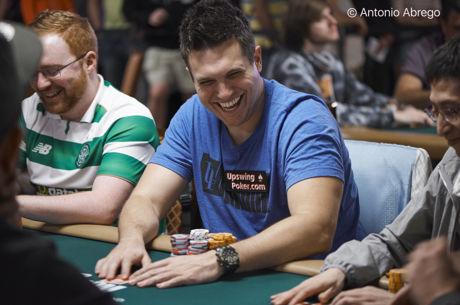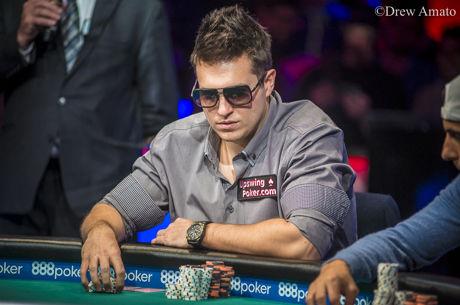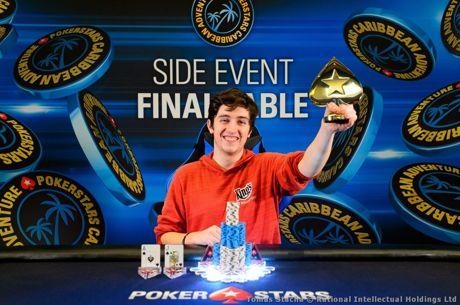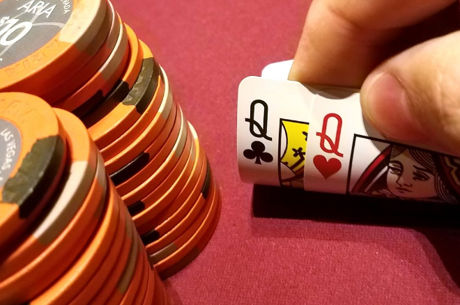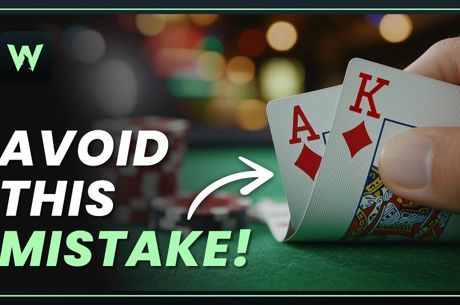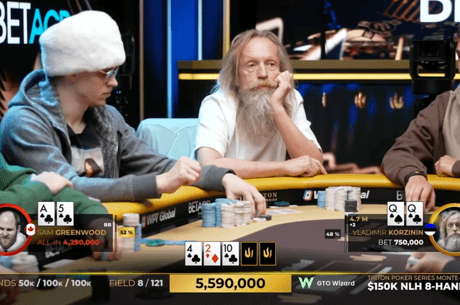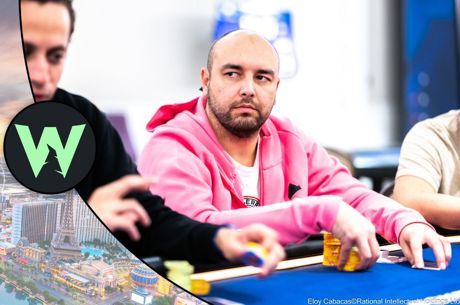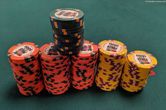Analyzing a 3.7 Million Dollar River Card at the WSOP
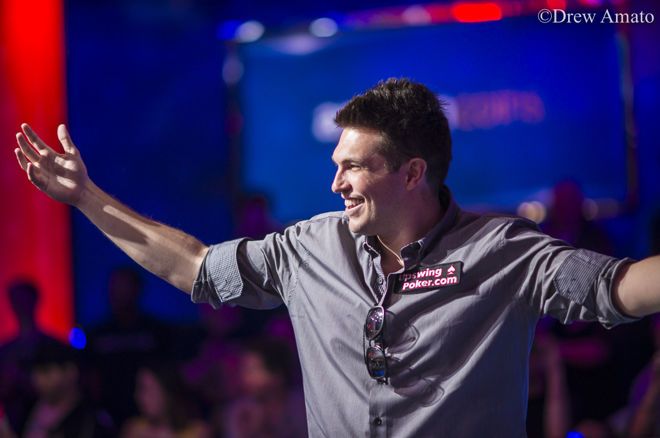
An article by Ernest Gorham.
It’s the 2017 WSOP One Drop final table and just two players remain. The $3,686,865 up top is going to either Upswing Poker’s own Doug Polk or high stakes pro Bertrand ‘ElkY’ Grospellier.
Doug is sitting on a stack of 37.6 million chips (47bb) while Elky has 27.4 million chips (34bb). Doug is on the button and posts the small blind of 400,000 and Elky posts the 800,000 big blind. A 100,000 ante is posted by both players as well.
Note: the stream of this final table mistakenly showed the blinds at 300k/600k.
Preflop
Doug is dealt Q♣J♥ and opens the action with a raise to 1.9 million. ElkY defends his big blind with J♠10♣. The pot is 4 million.
Preflop Analysis
Both of these decisions are standard.
It is worth noting that both players are going to be playing extremely wide ranges in this spot. Doug will be raising 65% or more (possibly much more) of his hands at these stack depths. This means ElkY must defend his blind with a majority of his holdings as well, especially considering his great pot odds.
In a standard heads-up match, Doug’s raise size would be closer to the minimum, but this is a tournament with a 100,000-ante posted by each player. These antes juice the pot and compel Doug to raise to a slightly larger size (~2.4 big blinds.)
If this tournament had a big blind ante, there would be an extra 600,000 in the pot and Doug would adjust by raising even larger.
Flop
The flop is dealt J♣10♠4♦. ElkY checks to Doug who c-bets 2 million chips. ElkY check-raises to 6.2 million and Doug calls.
Flop Analysis
These sorts of high boards are advantageous for Doug as he is the preflop aggressor and thus has more high cards in his range. As a result, he will c-bet with a very wide range on this board. Top pair good kicker is, of course, a part of that range and an excellent hand with which to value bet. ElkY is going to have to call with many worse hands considering his range and pot odds.
ElkyY’s decision is a bit more interesting. His hand blocks a lot of Doug’s continuing range (like AxJx, KxJx, QxJx), so you could make a case to slow-play. However, Doug still has a number of other hands with decent equity against top-two-pair that will call.
Check-raising has a couple of potential benefits. It either makes Doug pay to see the turn with his hands that have equity versus top two pair, or makes Doug surrender his equity by folding. Both of these are great for ElkY, so check-raising is the preferred play here.
Doug’s call of the check-raise is also standard. ElkY has a ton of draws and backdoor draws in his range with which he could be check-raising, and Doug’s holding is simply too high in his range to consider folding.
All in all, both players played the flop well. On to the turn.
Turn
The dealer turns the 8♦, making the board J♣10♠4♦8♦. The pot is 16.45 million chips.
ElkY bets 8.8 million (leaving just over 10 million chips behind) and Doug makes the call.
Turn Analysis
ElkY still has a very strong hand with which he can extract value, so his bet is standard. With only ~1.1 pot-sized bet behind, he could opt for a shove, but he decides to go for a non-all-in bet worth around sixty percent of the pot — a reasonable size.
Doug is put in a tough spot. He does have some better hands in his range than QxJx. However, if he only calls with his two pairs, sets, and straights, he will be over-folding significantly. Doing so would only make sense if ElkY rarely bluffs in this spot, which is possible, but unlikely considering ElkY's background as a successful online player.
This means Doug has to continue with some of his one-pair hands. The question is: which are the best to do so? This is a situation where it’s very unlikely ElkY has a better one-pair hand. He either has two-pair or better, or a bluff.
In situations where your opponent either has you crushed or is bluffing, the absolute strength of your hand matters much less than the removal of your hand.
In this case, Doug could have AxAx or KxKx, which are better hands than his QxJx in terms of absolute strength. However, QxJx is a preferable call to those premium pairs for two reasons:
- Blockers
Doug having a queen makes it less likely ElkY has Qx9x for a straight. Similarly, his Jx decreases the odds of ElkY having two-pair. - Backup equity
Even if he's behind, Doug's QxJx has a gutshot straight draw.
These two factors make QxJx the second-best possible one-pair hand with which to call.
(Can you think of the best one pair hand in this spot? Comment below the article with your guess!)
So, while it isn’t a great situation for him, Doug’s call is correct.
River
The river brings the Q♦ making the final board J♣10♠4♦8♦Q♦. The pot is 34 million chips and ElkY decides to check.
River Analysis
ElkY’s check makes a lot of sense. If he shoved, he will almost never get called by a worse hand or force a fold from a better hand.
Doug’s decision to bet or check behind is close, but checking is likely much better. He may get ElkY’s specific hand to call, but ElkY may even find a fold here with the flush and 4-straight completing.
Doug's shove could also value-own himself against hands like a set of fours or a nine (though ElkY probably shoves most of his nines on the river).
Results
Doug checks back on the river and scoops the pot with his superior two-pair. He went on to win the tournament, which was recorded for a vlog on his YouTube channel.
Final Thoughts
Even when Doug and Ryan Fee analyzed this hand for the Upswing Lab training course members, they didn’t completely agree. It goes to show, poker is a game that is far from being solved!
Would you have played this hand differently in either players' shoes? Let us know in the comments!
Do Not Play Another Hand Without This $7 Tool
With such a low price tag, the $7 Postflop Game Plan is a no-brainer if you want to nail down your fundamentals...
...and build a bigger bankroll.
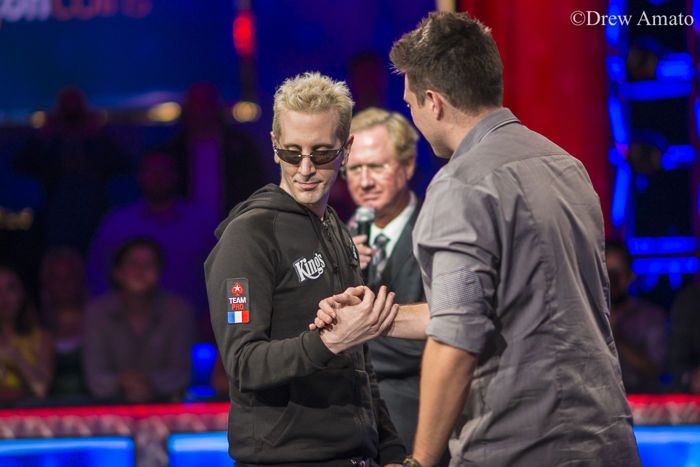
Sponsor generated content by Upswing Poker.

